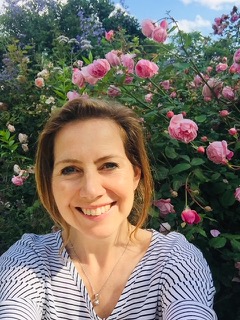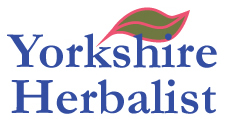Echinacea
Echinacea purpurea Moensch. Purple coneflower

Family: Compositae/ Asteraceae
Description: “Tall, rhizomatous perennial with ovate-lanceolate leaves. Purple, honey-scented, daisy-like flowers with conical, orange-brown centres, are produced in summer and early autumn. H 1.2m, S 45cm.” (Bown, 1995)
Habitat: Native to eastern USA.
Harvest: Roots and rhizomes are lifted in autumn.
Parts used: ROOTS and RHIZOMES;
Dosage: 1:5 1-6ml, FE 0.5-2ml, dried 2-6g daily;
Actions:
-IMMUNOSTIMULANT,
-ANTI-INFLAMMATORY,
-ANTIBACTERIAL,
-ANTIVIRAL,
-VULNERARY (Bradley, 1992);
-LYMPHATIC (Mills and Bone, 2000)
Indications:
-Chronic viral and bacterial infections such as chronic cystitis and chronic pelvic inflammatory disorder, chronic fatigue syndrome and shingles,
-Abscesses, poorly healing wounds, infected eczema,
-To aid recovery after chemotherapy (AD);
-Mild septicaemia,
-Furunculosis,
-Skin complaints,
-*Prophylaxis of colds and influenza (Bradley);
-*Treatment of upper respiratory tract infections; *sinusitis,
-*Recurrent candidasis (Mills and Bone);
External usage:
-*Skin complaints, eg boils, acne (Mills and Bone);
-Wounds and infected wounds and inflammation (AD);
Safety: “Can do no harm and has no side effects” (Weiss). No evidence to suggest long-term use will have adverse effect on immune system as Echinacea ‘probably a benign agent acting mainly on phagocytic activity (non-specific immunity)’ (Mills and Bone).
However, AD recommends to use only for a genuine cause. As there is a possibility that long term use may build up the body’s resistance to its properties, it is wiser to preserve the herb’s potency.
Recommended for children with recurring infections (AD).
Caution should be applied to patients with known allergies to daisy family. (Mills and Bone).
Do not prescribe while patient undergoing chemo or radiotherapy; wait until treatment over. Likewise for TB. Not recommended for MS or other autoimmune diseases (including treatment for HIV) until further research available.
It is safe, however, to prescribe alongside antibiotics. (AD)
Contra-indications: None known (Bradley).
Key Constituents (Mills and Bone):
-Alkylamides, mostly isobutlyamides (which cause characteristic tingling in mouth),
-Caffeic acid esters, including significant amounts of chicoric acid. NB echinacoside not present in E. purpurea.
-Misc.: essential oil, polysaccharides, polyacetylenes, non-toxic pyrrolizidine alkaloids.
Pharmacology: Use in treatment of bacterial and viral infections well established (Bradley) though Mills and Bone suggests any such activity probably follows indirectly from immune enhancement. Polysaccharides, isobutylamides, chicoric acid and various unsaturated compounds are considered active in Echinacea’s immunostimulating potential. Stimulation of phagocytosis has been demonstrated in animals by oral administration. (Bradley) For further detail see Mills and Bone.
Clinical trials: For details of trials * above, see Mills and Bone, p358-9. Also see AD handouts 20.3.01: “Some trials have shown that its use shortens the duration of colds. One trial showed a significant reduction in the incidence of colds in people with lowered resistance to infection.”
Toxicology: No toxic effects observed in rats (Mills and Bone).
History: Generic Echinacea from Greek echinos, “hedgehog”, referring to prickly scales of flower’s central cone. E. purpurea most widely used species as most easily cultivated. Now considered most effective detoxicant in Western medicine for the circulatory, lymphatic and respiratory systems and has bee adopted by Ayurvedic practitioners. Research into this species followed an import of seed by German herbal company Madaus in 1939. (Bown)
Traditional and Practitioner sources:
“Echinacea is indicated whenever pus is present anywhere in the body…Its ability to protect against secondary infection hitting you while you are down has been proved time and again in practice.” Dorothy Hall p149-151.
“The herbal practitioner today considers echinacea the finest blood-cleansing remedy for any infectious condition, and for a number of inflammatory conditions like skin disease, hypersensitivity reactions (eg. allergies), inflammation and other immunological disturbances…
[It has the] ability to enhance general defensive responses, host resistance and tissue repair. It is a specific remedy for boils, carbuncles and abscesses, for septicaemia, pyorrhoea and tonsillitis.
It is also a circulatory stimulant leading to increased blood flow through the tissues and a pronounced diaphoresis in febrile conditions. It has a digestive action that in certain cases acts to soothe dyspeptic conditions, particularly when there are digestive infections, but in other cases can lead to a feeling of nausea.” Simon Mills, 1993: 490
“-Take 2-5ml doses every 2-3 hours for influenza, chills and UTIs, during the first couple of days of acute symptoms.
-Use the diluted tincture as a wash for infected wounds.
-Use 10ml tincture as a gargle in a glass of warm water for sore throats.
-Take three 200mg capsules up to 3 times a day at the onset of acute infections, such as colds, influenza and kidney or urinary tract infections.” Penelope Ody, 1993: 53.
“Echinacea angustifolia:
Stimulating alterative: promotes suppuration and increases natural resistance to infections. Specific for endotoxaemia, exotoxaemia, toxaemic and cancerous cachexia, and malignant degeneration of acute toxic conditions.
Individual indications:
-Septic infections, septicaemia.
-Furunculosis, carbuncles -oral, and local poultices.
-Ulcerative pharyngitis, tonsillitis and stomatitis -as gargle or spray.
-Eczema from blood conditions -with Baptisia and Hydrastis.
-Gastric and duodenal ulcers -as an antiseptic, with Hydrastis.
-Enteritis -to control putrefactive changes.” Priest and Priest, p72.


